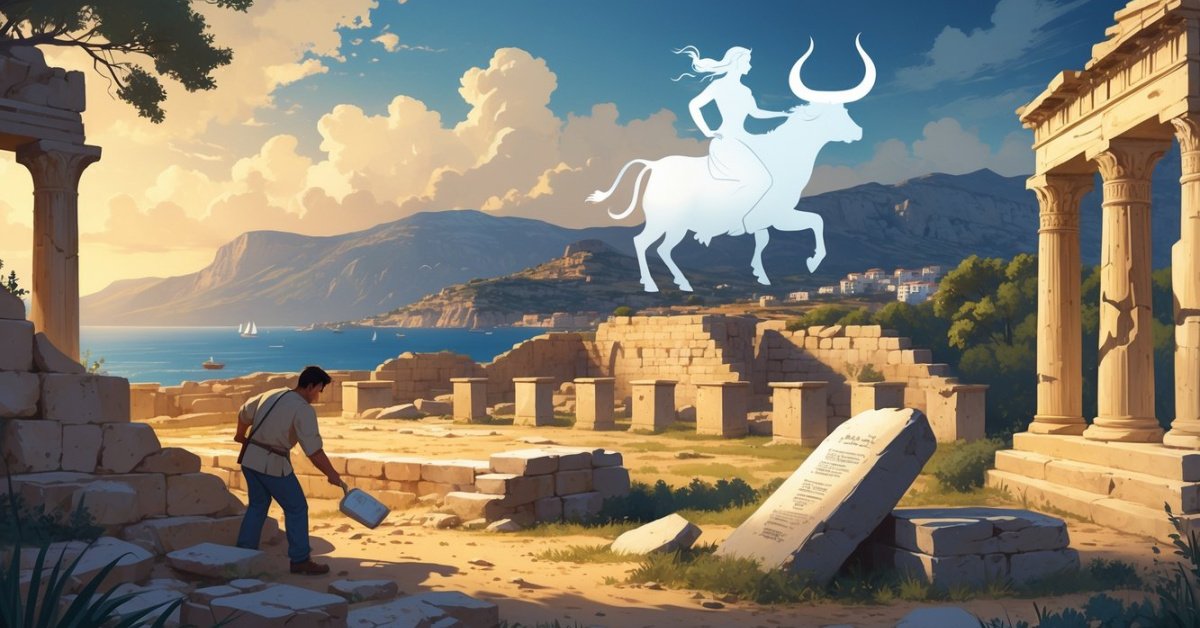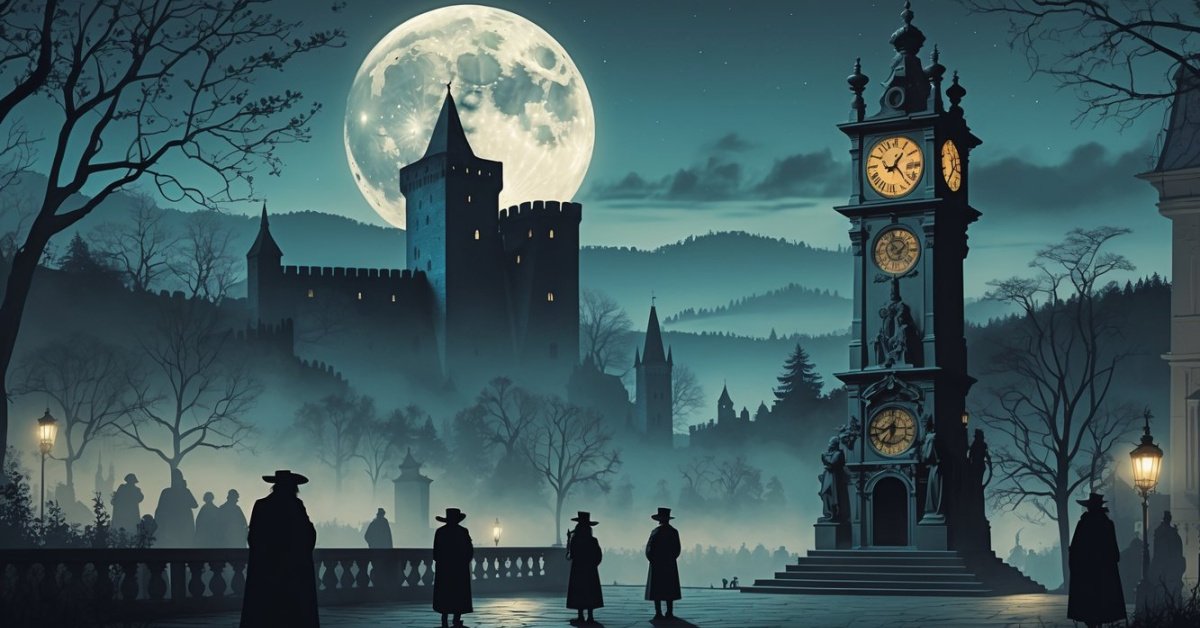Croatia has a long and fascinating past full of secrets and unanswered questions. Some of the biggest historical mysteries in Croatia include ancient ruins, lost treasures, and mysterious artifacts that still puzzle historians.
From ancient Greek helmets found buried in the ground to medieval castles hiding untold stories, the country’s landscape is filled with clues waiting to be explored.
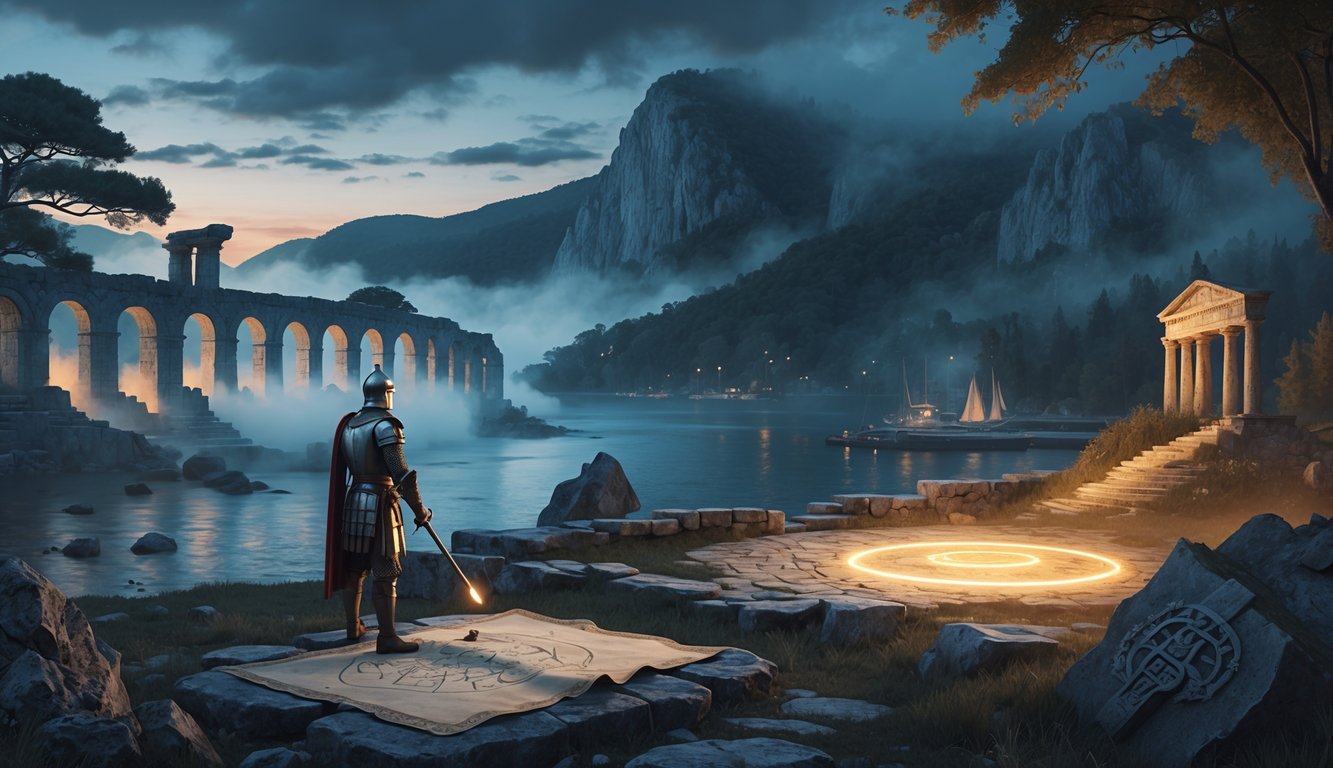
Croatian history stretches back to prehistoric times. Relics and ruins are scattered across its towns and countryside.
Curious travelers can find strange sites like the Krapina Neanderthal site, unknown megaliths on the Brijuni Islands, and hidden fortresses standing quiet in the hills. Each of these places holds stories about Croatia’s past that remain unsolved.
Modern-day discoveries, such as a 2,500-year-old helmet, have deepened the mystery around Croatia’s rich history. Exploring Croatia’s enigmatic sites offers an exciting look into a country shaped by centuries of wonders.
Ancient Civilizations and Lost Cities
Croatia has been home to many ancient civilizations, from early Paleolithic communities to Greek colonies and Roman cities. Layers of ruins and artifacts reveal a long past but leave many questions about how people lived and built cities.
The Enigma of Salona
Salona was once the capital of the Roman province of Dalmatia and counted tens of thousands of residents. Today, only its ruins remain just outside the modern city of Split.
Large walls, ancient gates, and amphitheaters give visitors a glimpse of what was once a bustling Roman city. Yet historians cannot agree on why Salona was abandoned.
Some believe barbarian invasions forced people to flee, while others point to natural disasters or diseases. Archaeologists still debate why such a major Roman city, with aqueducts, temples, and public baths, disappeared so quickly.
Many mysteries remain about daily life in Salona. Who were its most important citizens? How did they live and worship?
Despite big digs and careful research, much of Salona’s past is still hidden beneath the stones and earth. New discoveries continue to add to our understanding of this incredible historical site.
Secrets of Pharos and Stari Grad
The ancient Greek colony of Pharos was founded in 384 BC on Hvar Island, where Stari Grad sits today. Pharos served as a key port and trading center, built to protect Greek interests in the Adriatic Sea.
Its city walls and layout can still be seen, showing skilled planning by the Ancient Greeks. However, many questions linger about the lives of its first settlers.
The exact location of certain buildings and religious sites remains unknown. Ancient texts mention major conflicts with native Illyrian tribes, but details about those battles are hard to confirm.
The modern town of Stari Grad has grown over the ruins. New finds keep appearing, and researchers piece together how the city changed from a Greek stronghold to part of the Roman Empire.
Many of Pharos’s secrets are still waiting to be uncovered.
Unsolved Mysteries of Vučedol Culture
The Vučedol culture flourished along the banks of the Danube River during the early Bronze Age, around 3000 BC. This group was skilled in making pottery, tools, and early forms of metal.
One of the most famous finds is the Vučedol Dove, a small ceramic vessel shaped like a bird. Despite many excavations, little is known about how Vučedol people lived.
Their society seems well-organized, but their writing, symbols, and beliefs are not fully understood. Few burial sites have been found, making it hard to learn about their customs.
Archaeologists still wonder why the Vučedol culture faded away so suddenly. Some suggest climate change or invasions played a role.
Every new artifact adds another piece to the puzzle of Croatia’s ancient past.
The Puzzle of Diocletian’s Legacy
Diocletian’s rule left behind remarkable architecture and hidden stories in Split, Croatia. His palace complex, mysterious temple additions, and burial place continue to capture people’s curiosity.
Diocletian’s Palace Secrets
Diocletian’s Palace stands at the heart of Split. Built in the late third to early fourth century AD, this vast Roman villa served as a retirement home for Emperor Diocletian.
Over centuries, the palace has transformed into a lively city center. This change makes it hard to separate ancient features from newer buildings.
Archaeologists recently discovered a hidden passageway beneath the palace. Roman guards once used the underground corridor to move unnoticed through the fortress.
This discovery highlights how much remains buried or undiscovered within the palace walls. Visitors can still see impressive Roman ruins, massive stone arches, and underground cellars.
The palace’s design hints at Diocletian’s desire for safety, comfort, and power.
Temple of Jupiter and Ancient Egyptian Sphinx
Within Diocletian’s Palace stands the ancient Temple of Jupiter. This temple, dedicated to the king of the Roman gods, is small but rich in details.
Its barrel-vaulted ceiling and carved decorations give a window into Roman religious life in Dalmatia. Near the temple’s entrance sits an ancient Egyptian sphinx.
Roman builders brought the sphinx from Egypt, and it still guards the temple steps. The presence of the sphinx is unusual for a Roman site in Croatia and raises questions about Diocletian’s interests and connections with Egypt.
Today, the temple serves as a reminder of cultural blending between Roman and Egyptian traditions. It remains one of the few places in Europe with an authentic sphinx outside Egypt.
The Mystery of Diocletian’s Mausoleum
Diocletian’s Mausoleum, later transformed into the Split Cathedral, was meant to hold the emperor’s remains. The round structure, topped with columns and decorated in Roman style, displays Diocletian’s taste for luxury.
After Diocletian’s death, builders converted the building into a Christian church. Over time, the emperor’s remains and their exact location became a mystery, as his burial site was replaced with the tombs of Christian saints.
This change marks a symbolic shift in Split from a pagan city to a Christian one. The mausoleum’s blend of pagan and Christian art still draws historians and travelers.
Its unique history makes it a rare example of a Roman tomb turned into one of Europe’s oldest cathedrals.
Medieval Mysteries of the Dalmatian Coast
Dalmatia is famous for its ancient cities, high stone walls, and tales of faith. Each spot has its own story, from legends of Dubrovnik’s founding to the secrets inside Trogir’s cathedral and the massive walls of Ston.
The Legends of Dubrovnik
Dubrovnik, sometimes called the “Jewel of the Adriatic,” stands out for its rich medieval history and well-preserved walls. According to local lore, the city began as the ancient settlement of Ragusa, which merged with a nearby Slavic village.
Many speak about mysterious tunnels said to run underneath the Dubrovnik city walls. Locals sometimes recall stories of treasures hidden during past sieges or cunning escapes planned through secret passages.
The city’s impressive walls once held back invaders for centuries. These limestone barriers became a symbol of safety and freedom, making Dubrovnik known as a fortress that resisted powerful empires.
Trogir: Cathedral and Master Radovan
Trogir sits along the Dalmatian coast, known for its tight streets and Romanesque towers. Its old town is a UNESCO World Heritage Site and draws visitors with its medieval charm.
The main highlight is the Trogir Cathedral, especially its stone portal. This portal is the masterpiece of Master Radovan, a sculptor whose true life remains mostly unknown.
He finished the entrance in 1240, filling it with detailed figures carved into limestone. Radovan’s sculptures, showing biblical scenes and mythical creatures, combine Roman Catholic themes with local legends.
Historians still debate who Master Radovan was and how he learned his unique style. This adds a layer of mystery to Trogir’s most famous landmark.
The Secret of Ston Walls
The massive walls of Ston stretch over 5 kilometers and are among Europe’s longest defensive stone stretches. Builders constructed these walls in the 14th and 15th centuries to protect the valuable salt pans, which were vital for the Ragusan Republic’s economy.
Some believe that hidden vaults still exist underneath the walls. These vaults may have kept salt and treasures safe in times of war.
While much of the original wall remains, many smaller connected tunnels and chambers are yet to be explored. People have long wondered how such enormous stone barriers were constructed with limited technology.
Even today, the purpose of certain sections and secretive passageways continues to puzzle researchers and visitors.
Cursed Islands and Haunted Legends
Croatia is home to some of the Mediterranean’s most mysterious islands. Stories of curses, ghosts, and forbidden places linger on these islands.
These legends connect closely with national parks, abandoned buildings, and ancient religious communities.
The Curse and Ghosts of Lokrum
Lokrum, located just across from Dubrovnik, has long been feared for its dark tales. In the late 18th century, Benedictine monks were expelled from Lokrum after living there for centuries.
The night before they left, the monks circled the island three times in a torchlit procession, cursing anyone who tried to claim the land. Visitors claim to feel uneasy on Lokrum, especially around the ruined monastery and shady forests.
Some say they have heard strange noises or seen ghostly figures. Locals often remind tourists not to take anything from the island—not even a leaf—because of the curse and its haunted reputation.
Important facts about Lokrum:
- Near Dubrovnik
- Important in Benedictine history
- National park today
The Mystery of the Cursed Island of Vis
The island of Vis sits in the Adriatic Sea and is known for its isolation. For much of the 20th century, Vis was cut off from tourists and outside visitors because it held a military base.
Over time, empty tunnels and deserted buildings added to its reputation as a cursed island. Stories spread of strange happenings on Vis, especially at night.
Some blame the island’s lonely past and harsh winds for reports of ghostly sights. Shipwrecks near the coast and sudden storms further add to the air of mystery around Vis.
Its hidden beaches and secret caves lead many to wonder if something is keeping outsiders away.
Highlights of Vis:
- Military site for decades
- Secluded with limited access until the 1990s
- Home to legends of shipwrecks and unexplained events
Benedictine Monks and Forbidden Places
Across Croatia, Benedictine monks built monasteries on remote islands. Their strict way of life and rituals kept outsiders at a distance.
Over time, this secrecy grew into tales of forbidden places and lingering spirits. Lokrum is the best-known case.
When the monks left, people believed their curse brought bad luck to future owners. Napoleon’s officers and Austrian nobles faced illness, disaster, or early death after claiming the island.
Locals say the monks’ curse still protects the land. Many islands with Benedictine history are now part of protected areas or national parks.
Visitors respect the rules. Many choose not to stay overnight because of the eerie legends tied to these forbidden places.
Power Struggles: Croatia’s Lost Royal Dynasties
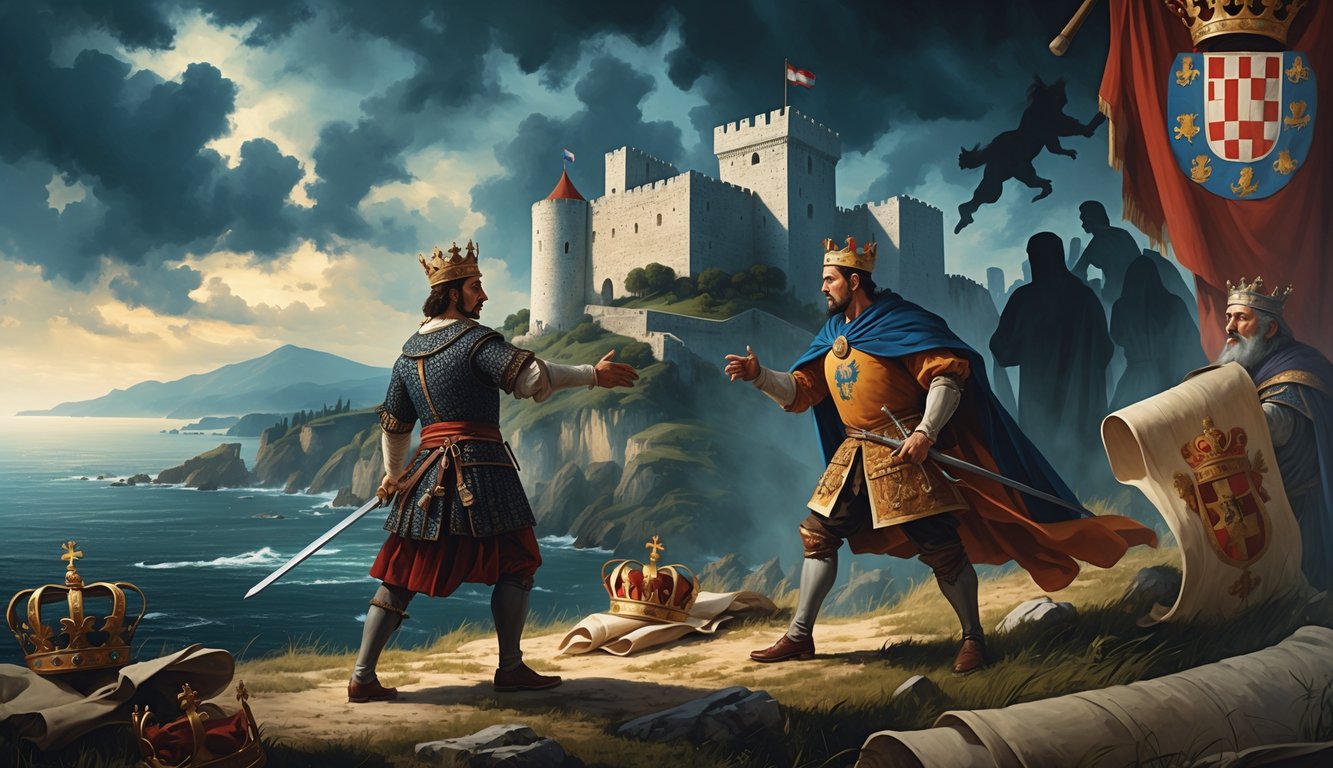
Croatia’s royal families faced many power struggles and unexplained events during the Middle Ages. Some kings disappeared from records, while old dynasties vanished without clear reasons.
The Fate of King Tomislav
King Tomislav is known as the first king of Croatia, crowned around 925. He united the Duchy of Croatia and nearby lands into the Kingdom of Croatia.
His later life is still a mystery. Historians do not know exactly when or how Tomislav died.
No grave has been found, and old documents are silent after his last victory against the Hungarians. Some stories say he died in battle, while others claim he simply vanished.
The lack of records has caused many debates. Tomislav’s end stands as one of Croatia’s biggest historical puzzles.
For more on the era of Tomislav, visit this overview of the Croatian Kingdom.
The Secrets of the Trpimirović Dynasty
The Trpimirović dynasty led Croatia for over a century after the time of Duke Trpimir. They brought the state closer to Western Europe and the Pope, especially under rulers such as Mislav and Trpimir.
Much about the lives and deaths of these rulers remains unknown. Diplomatic letters between Trpimir and Pope John VIII suggest important alliances, but much is lost to time.
The family line ended with King Stjepan II. Historians debate if war, sickness, or betrayal caused this.
The extinction of this dynasty shaped Croatia’s royal future. You can read about the early Croatian state and its royal houses in this history of Croatia.
Unsolved Mysteries of Early Croatian Kings
Early Croatian kings, including Borna and Mislav, helped forge alliances with Slavs and Croats. They built the medieval Croatian kingdom.
Some details about these rulers are found in church records and writings from the Pope. Many records were lost or destroyed.
Lists of kings from the time often conflict. Some names are missing, and important events go unexplained.
Reasons for quick changes in rulers are not always clear. This leaves questions about assassination, exile, or sudden death.
To learn about these old power struggles, see a detailed look at Croatia’s medieval royal families.
Empires and Shifting Borders
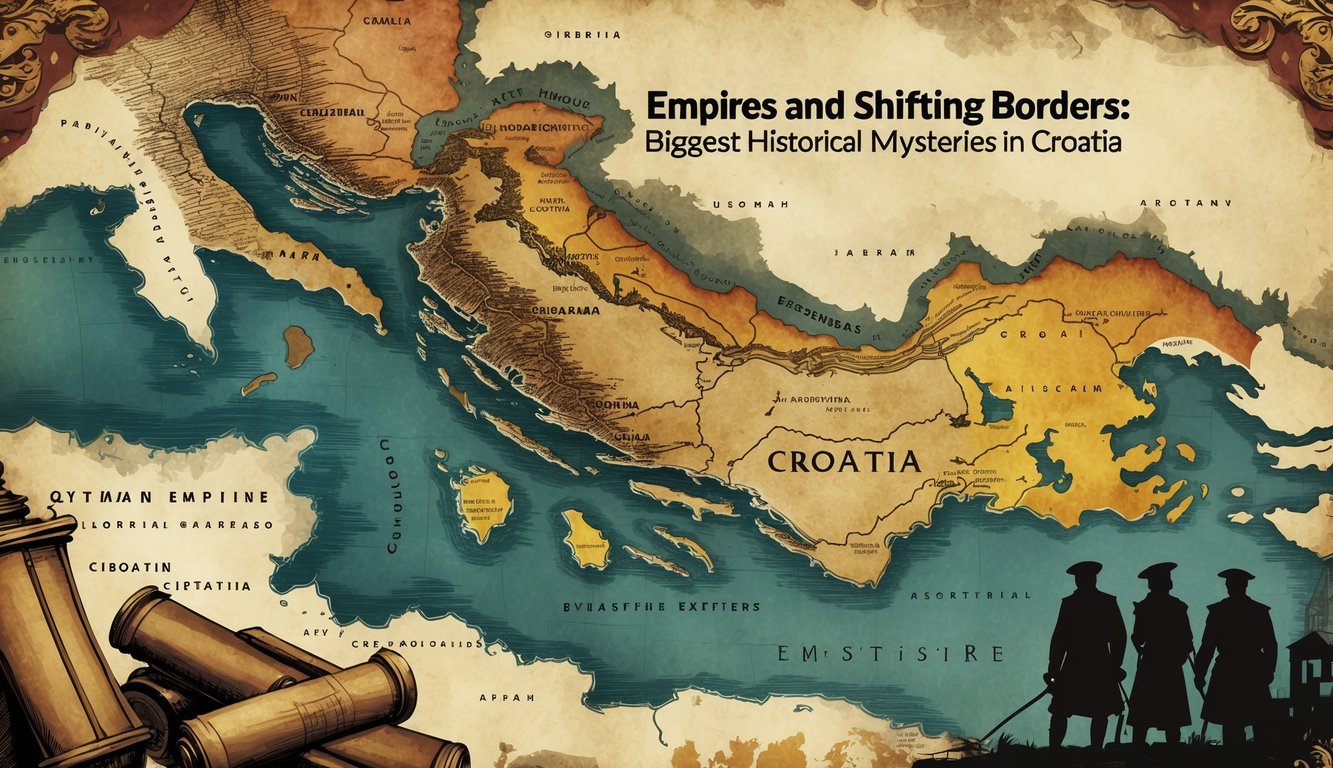
Croatia was shaped by competing empires, shifting powers, and ever-changing borders. Its past shows complex interactions, from invasions to alliances.
Ottoman and Venetian Intrigues
For centuries, the Ottoman Empire and the Venetian Republic battled for control across the eastern Adriatic coast. The Ottomans advanced from the southeast, reaching deep into the Military Frontier and up to the gates of major Croatian towns.
The Venetians dominated the coast, including Dalmatia, and prized cities such as Zadar and Split. The border moved often, so villages sometimes changed rulers many times in a single generation.
This created a blend of cultures, religions, and architecture. Major events, like the Great Turkish War, forced villages and towns to adapt to wartime life.
Today, people can see remnants of stone fortresses, Venetian walls, and Ottoman roads throughout regions like Dalmatia and Slavonia. Modern Croatia includes ancient provinces like Illyricum, Dalmatia, and Pannonian Croatia, each with its own history of occupation and resistance.
Learn more about the region’s shifting history in detail at this brief summary of Croatian history.
The Riddles of the Republic of Ragusa
The Republic of Ragusa (now Dubrovnik) thrived for centuries as a center of trade and diplomacy. It balanced relations with powerful neighbors, including the Ottomans, Venetians, and later the Habsburg Monarchy.
Ragusa paid tribute to the Ottoman Empire for protection but kept its independence through clever treaties. The city’s secretive archives and detailed records have left historians puzzling over the true nature of its autonomy.
Some questions remain: How did such a small republic maintain such wealth and influence under these pressures? The Dubrovnik Republic built massive defensive walls, which still encircle the old city today.
Ragusa’s stories highlight the delicate balancing act of surviving—and even thriving—amid powerful empires.
Byzantine and Habsburg Influence
The Byzantine Empire introduced Christianity, art, and Eastern traditions to the coastal cities and islands. Later, as the Habsburg Monarchy gained control, Croatia entered new political unions, such as the personal union with Hungary and later with Austria-Hungary.
The Habsburgs set up the Military Frontier, a buffer zone against the Ottomans. This brought new settlers and gave some regions special military status.
Many areas experienced shifting borders as rulers established lines and created new districts.
Table: Key Shifts Under Byzantine and Habsburg Rule
| Empire | Influence | Key Regions |
|---|---|---|
| Byzantine | Christianity, culture | Coastal cities |
| Habsburg Monarchy | Military reforms, new laws | Slavonia, Frontier |
For a deeper dive, see this timeline of Croatia through the ages.
Architectural Wonders and Hidden Symbolism
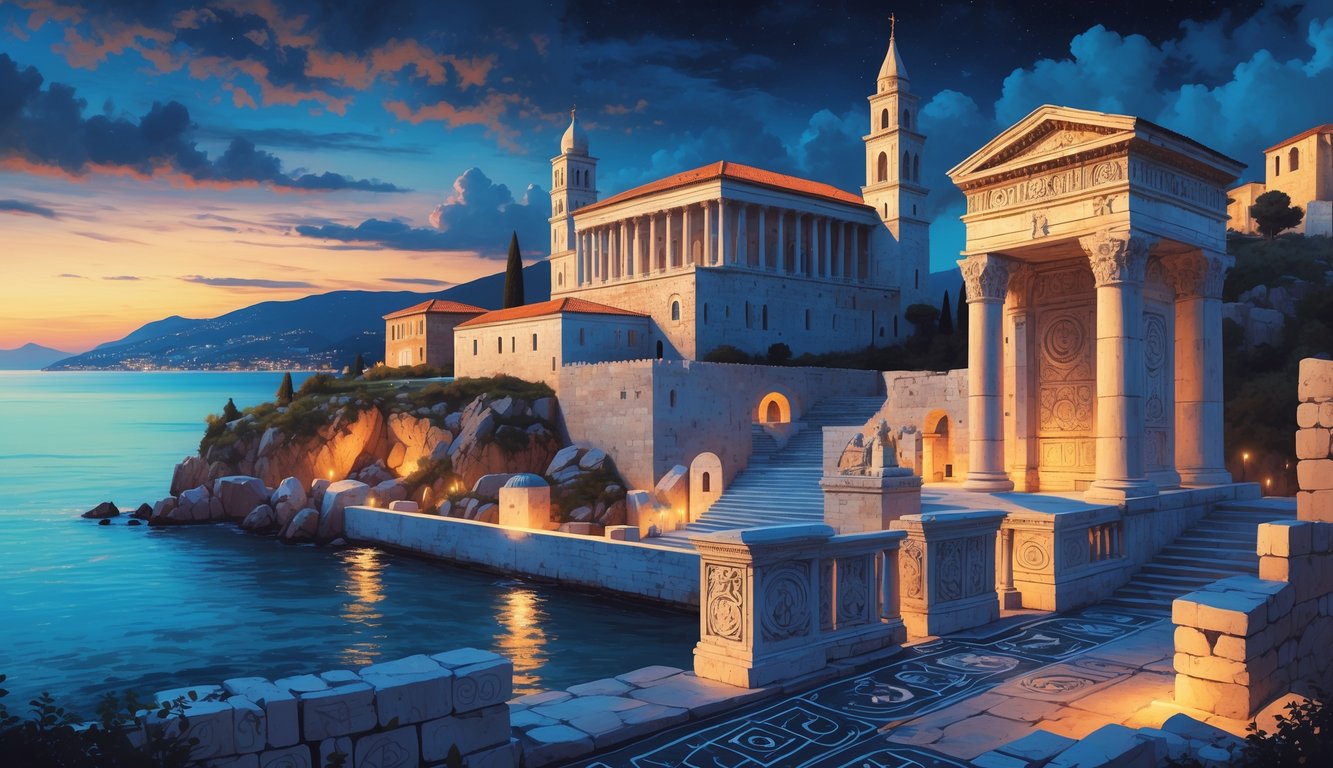
Croatia’s landmarks reveal a fascinating mix of architectural beauty and unsolved mysteries. Intricate structures, forgotten symbols, and the work of master builders invite visitors to look beyond the obvious.
Unsolved Secrets of the Euphrasian Basilica
The Euphrasian Basilica in Poreč, Istra, is one of Croatia’s most famous early Christian sites. Listed as a UNESCO World Heritage site, its 6th-century mosaics and columns offer a glimpse into the past.
Many details about its symbols and artistic choices remain unsolved puzzles. People debate the true messages hidden in its mosaic ceilings.
Some believe the floral patterns are simple decorations, while others suspect they hide Christian codes or hints about the church’s early leaders. The basilica’s complex floor plan and use of light suggest deeper spiritual meaning, but experts still disagree on the full story.
Visitors are often drawn to the mysterious inscriptions in Latin and Greek scattered across the site. It remains unclear why certain saints are highlighted or what story is told by images of fish, birds, and bread.
You can discover more architectural wonders and their mysteries in this overview of Croatian historical sites.
The Legacy of the Romanesque and Gothic Styles
Romanesque and Gothic styles have shaped Croatia’s towns and cities for centuries. In places like Trogir, a town on the UNESCO World Heritage list, churches and palaces feature both rounded Romanesque arches and pointed Gothic windows.
This mix of styles shows how local builders adapted European trends within their own history. Key features include thick stone walls, rose windows, and high vaulted ceilings.
Sculpted doorways often show scenes from the Bible, with lions, saints, and angels carved in stone. These details stand as a record of the changing tastes and beliefs through the Middle Ages in Croatia.
Some buildings blend the two styles so well that experts sometimes disagree about their true origins. The city of Split’s Diocletian’s Palace even includes bits of ancient Roman, Romanesque, and Gothic design.
Its layered history can be explored through historic sites in Croatia.
The Influence of Florentine Architect Michelozzo
The Florentine architect Michelozzo left a subtle but lasting mark on Croatian architecture during the Renaissance. Known for his work in Italy, he was invited to the region by local leaders looking for the finest modern designs.
Michelozzo’s style brought a sense of order, proportion, and elegance to buildings in Dalmatia. His projects often combined solid stone work with clear, simple shapes, avoiding overly ornate decoration.
One of his key contributions was the design of palace facades in towns like Dubrovnik and other major port cities. These buildings introduced large arched windows and airy courtyards, new features at the time.
His influence blended with local traditions, creating a special mix that set Croatian Renaissance architecture apart from neighboring regions. Locals still admire his talent for blending safety, beauty, and practicality in some of the country’s most significant urban spaces.
You can find more about lesser-known architectural achievements in this guide to hidden Croatia monuments.
Enigmatic Fortresses, Castles, and Strongholds
Croatia’s history is filled with impressive defensive structures that stand as silent witnesses to past wars, royal secrets, and mysterious legends. Many of these forts and castles reveal stories of power struggles, ancient families, and clever defenses.
Klis Fortress: Gateways and Legends
Klis Fortress sits high above Split, guarding the main route between the Adriatic coast and inland Croatia. It has controlled this gateway for centuries, acting as a vital defense point against invading armies, including the Ottomans.
The fortress has changed hands many times and played a starring role during the Ottoman wars. Legends speak of brave defenders who held out during long sieges.
Some even say secret tunnels run under the stone walls, designed for unexpected escapes and moving supplies in secret. Today, visitors can walk the battlements and see sweeping views that once helped spot enemies from miles away.
Klis Fortress is not only famous for battles but is also known for its role in popular culture, appearing in “Game of Thrones” as the city of Meereen. For more details about its history, see the guide to Croatia’s best castles.
Trakošćan Castle’s Hidden Past
Trakošćan Castle stands in northern Croatia, near Varaždin. Forests and a quiet lake surround it.
Built in the 13th century, it served as a defensive fortress. In the 19th century, it became a romantic-style family home.
Few records exist from its earliest days. Some historians think it stands on the ruins of an older stronghold.
The Draskovic family shaped much of its history. They filled it with rare art, weapons, and old books.
Guests can still see many original objects today. Rumors of hidden rooms and lost treasures keep curiosity alive.
Restoration over the years has protected Trakošćan’s unique look. The castle is one of Croatia’s most photographed landmarks.
Tourists visit not just for its beauty, but also to glimpse its hidden history. Read more stories about Croatian castles at Croatia Travel Guides.
Unraveling Secrets of Osijek and Slavonski Brod
Osijek’s fortress, called Tvrđa, appeared in the early 18th century. Builders gave it thick stone walls, artillery positions, and a maze of streets for defense.
Tvrđa could control trade and military movements along the Drava River. This made it a key part of the city’s history.
To the southwest, Slavonski Brod’s fortress stands as one of Croatia’s largest military defense systems. Austrians built it to protect against Ottoman advances.
Soldiers lived and trained inside. The design allowed quick responses to attacks.
Both strongholds have seen many battles. Today, they house museums, galleries, and schools.
Exploring their underground passages and old ramparts brings stories of sieges, lost regiments, and secret codes back to life. These sites attract visitors eager to connect with Croatia’s vibrant past. Find more about these enigmatic fortresses and their role in Croatian history.
War, Resistance, and Unanswered Questions
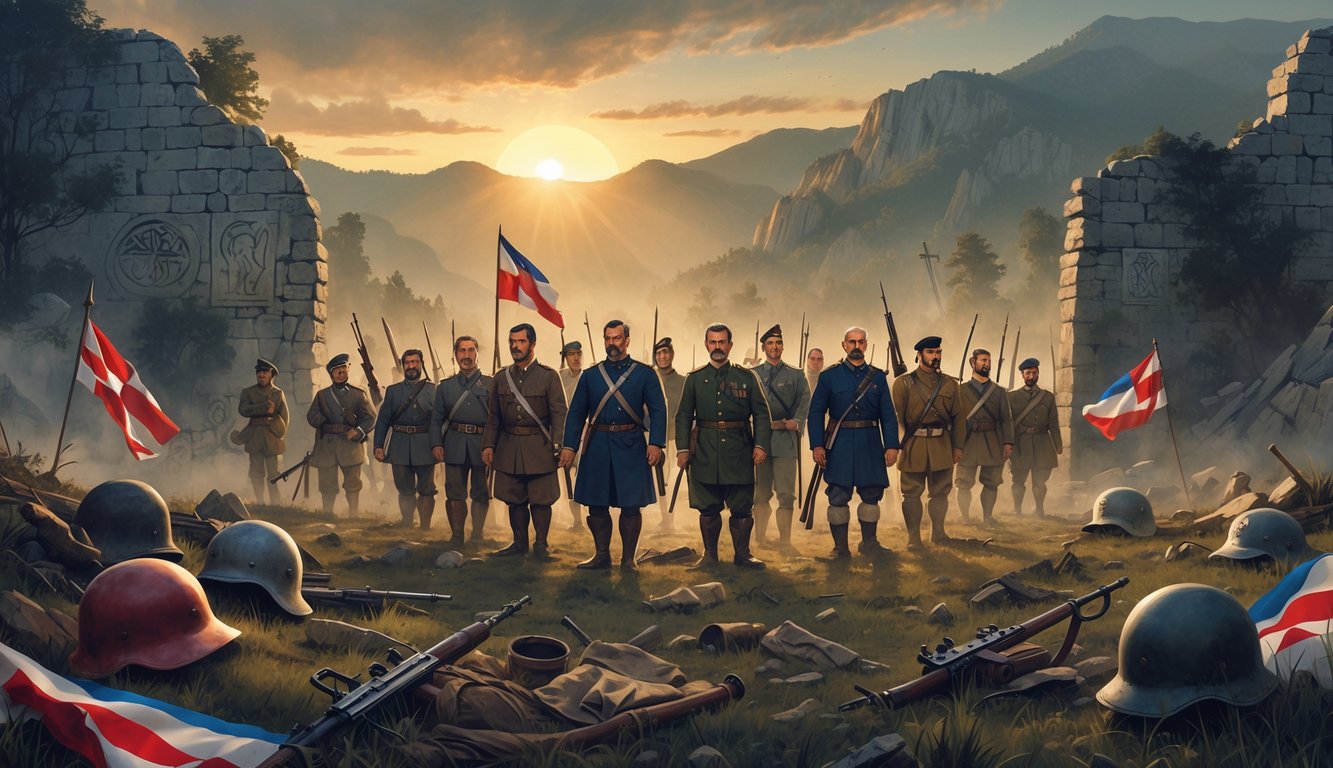
Croatia’s modern history is full of wars and shifting alliances. Leaders left their mark in both helpful and confusing ways.
Episodes from World War II through the 1990s continue to cause debate. Many people remain curious about these times.
World War II and the Independent State of Croatia
During World War II, Nazi Germany and Fascist Italy controlled the Independent State of Croatia. This period involved forced migrations, violence, and camps like Jasenovac, where many people died.
Historians still debate the exact number of victims. Many official records were destroyed or never kept.
Some families in Rijeka and other cities still search for missing relatives from this time. Questions remain about hidden wealth, lost art, and the location of mass graves.
The actions of the Ustaše regime continue to be a source of painful memories and mystery for families and scholars. For more about difficult historical questions from this era, see this list of unsolved mysteries from World War II.
The Riddles Surrounding Tito
Josip Broz Tito led Yugoslavia and played a crucial role in Croatia’s history. He led the Partisans, a resistance group that fought the Nazis and their allies.
Tito survived many attempts on his life. People today still debate his background, including his true birthplace.
Some believe he was born near Zagreb. Others think he might have come from elsewhere.
The details of his private life and some actions during his rule remain unclear. Claims about secret prisons and purges suggest his decisions affected communities across Croatia.
Tito’s decisions after the war changed borders and lives. Some of his motivations and orders are lost to history.
The Croatian War of Independence Mysteries
From 1991 to 1995, Croatia fought for its freedom from Yugoslavia. The city of Vukovar became a symbol of the war’s tragedy.
Even today, investigators search for thousands of people who disappeared during these years. Questions surround certain events, such as the fall of Vukovar and the fate of prisoners taken during the fighting.
Some military orders and plans remain classified. This makes research into these topics challenging.
In both Zagreb and Rijeka, locals remember unexplained explosions or disappearances linked to the war. The fate of missing persons and the locations of hidden burial sites still affect many Croatian families.
For more on global mysteries that remain unresolved, see the biggest historical mysteries in history.
Legacy, National Parks, and Natural Mysteries
Croatia has a rich blend of natural beauty and centuries-old secrets. Its national parks, ancient towns, and UNESCO World Heritage sites preserve unique stories.
Unwritten Stories of Plitvice Lakes
Plitvice Lakes National Park is famous for its turquoise lakes and stunning waterfalls. Legends and unsolved questions fill the area.
Some local stories claim the lakes were created by the “Black Queen” after a long drought. Hidden caves and underwater passages in the park remain unexplored and may hide more surprises.
Visitors notice that water levels often change without clear cause. Scientists believe underground rivers may connect some lakes, but the full network is still unknown.
| Features | Details |
|---|---|
| Waterfalls | More than 90 |
| Largest Lake | Lake Kozjak |
| Founded | Became a park in 1949 |
| UNESCO World Site | Listed since 1979 |
Ancient Remains of Vinkovci
Vinkovci is one of the oldest towns in Europe. People have lived there for more than 8,000 years.
Archaeologists have found Roman baths, old coins, and pottery from many cultures. Some discoveries, like a pair of ancient gold shoes, still puzzle experts.
The full story of how Vinkovci grew from a prehistoric village to a Roman city is not yet clear. Historians believe that many secrets remain buried.
Regular digs in the area keep bringing new objects to light. Each year, researchers hope to find another clue to unlock Vinkovci’s missing chapters.
Curious finds in Vinkovci
- Roman mosaics under modern streets
- Mysterious burial sites
- Ancient ceramics with unknown symbols
Preserved Wonders and UNESCO World Heritage
Croatia is home to several sites protected as UNESCO World Heritage for their beauty and cultural value. Plitvice Lakes is not the only place on the list.
The Old City of Dubrovnik and the historical complex of Split are also included. These places hold centuries of architecture, art, and tradition.
Many of Croatia’s historical landmarks remain well preserved. Restoration projects help keep their ancient look.
Some ruins and artifacts still raise questions about daily life, lost rituals, and forgotten languages.


